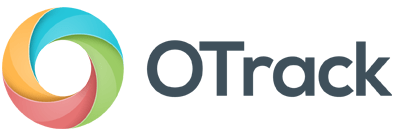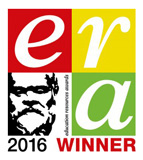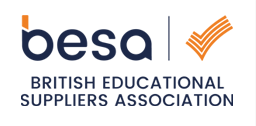Blueprint for a Tracking System
Sunday 26th February 2017Renowned education data blogger, James Pembroke, released a blog on 20th February 2017 entitled ‘Blueprint for a tracking system’. This is a ‘go to’ article for schools that are considering purchasing a tracking system, or reviewing the one they have. In the blog, James lists seven capabilities, which all tracking systems should make available to schools.
We decided to write this post to show how OTrack meets each of these very valid points. So, OTrack allows each school to:
1) Define and input their own objectives
While we offer a broad range of ‘off-the-shelf’ content sets, our users can also design their own curriculum, which can be tracked through our formative assessment tool. Some schools have found that certain commercially available curricula work for some subjects, but not all – so they use a ‘mix and match’ approach, or design their own. OTrack gives schools the freedom to amend their curriculum, change their KPIs, and add/delete objectives, as and when necessary.
2) Define their own summative assessment descriptors
We have two main methods for summative assessments that cater for schools that have fully embraced the philosophy and concept of the current curriculum; and, for schools that don’t want to move too far away from levels and points.
Our ‘Deeper Learning’ feature is the one that is aligned with the ethos of the current curriculum because it allows schools to choose their own summative codes and descriptors. Schools have the freedom to decide how many of their codes relate to ‘depth of understanding’. Deeper Learning can be used as either a linear or Point In Time Assessment (PITA) tracking tool.
If a school decides to alter the meaning of their descriptors, OTrack will allow them to make that change. For example, to paraphrase James’s blog: if a school originally used ‘secure’ to refer to a pupil having understood the majority of the curriculum, but then decides that ‘secure’ means that a pupil is working comfortably with what has been taught to date, then OTrack will accommodate this. Many schools and multi-academy trusts that use OTrack have made such changes in their assessment methods, and we have helped them achieve this in their pupil tracking.
We also have our ‘Best Fit’ feature, this works on a points-based system, and schools can choose three codes to use on either a 3, 6 or 9 step system. The descriptors that schools use in this system are typically ‘Emerging’, ‘Developing’, ‘Secure’ or ‘Beginning’, ‘Advancing’, ‘Met’ etc.
Throughout OTrack, progress can be evidenced by a teacher assessment. Schools can choose to use our Termly Targets feature to set expected progress, and/or use the Progress Markers feature to record a progress descriptor after reviewing and scrutinising work and books.
3) Record depth of understanding
Depth of understanding can be evidenced in our formative and summative tracking features.
Our formative tracker uses a RAG rating for each objective, with an extra colour, purple, for depth of understanding. Through close working relationships with OTrack schools, we have released various reports where depth of understanding can be evidenced for individual children, cohorts or contextual groups – using a behind the scenes associated numerical system.
Summatively, the Deeper Learning feature allows schools to show pupils working at greater depth, again giving useful whole school information for governors and Ofsted.
4) Enter whatever data they like
OTrack allows schools to record and analyse many different assessment types, using different baselines. These include; formative and summative teacher assessments, test RAW scores, ages, and most recently, standardised scores. Schools can decide how they wish to demonstrate what is good progress in any of these data sets, and we work with them to customise their reports accordingly.
We have recently noticed a high demand of our users requesting to record standardised scores in OTrack, so we are working on this exciting new development with a focus group of around 30 schools – this new feature will be released in March 2017. Recording and analysing standardised scores, alongside teachers’ assessments, will help schools triangulate assessment even more.
Our philosophy here at OTrack is; if enough schools ask for a new feature, then we will develop it. Other features we’ve created in the past include phonics/RWI tracking, behaviour monitoring and pupil-progress meeting notes, to name but a few.
5) Track pupils out of year group
All of our assessment tools allow schools to record pupils as working out of their year group. The OTrack reports can then evidence pupil progress, even if pupils are always going to fall into the ‘below’ or ’emerging’ category.
Many of our reports can toggle between two main criteria; ‘age related expectations’ (which are defined by the school) and, ‘expected progress’ (either a target set by the teacher or a teacher assessment of progress using our Progress Markers).
6) Design their own reports
Having the ability to have reports that meet a school’s exact needs is one of the main reasons why schools use OTrack ahead of other tracking systems. We have a dedicated team of report developers who take requests from our user-base, and can design reports that match exactly how the school wants to track. If we feel a report idea is so good that others will benefit from it, then we make it available to other users as well.
We have recently launched a YouTube channel to showcase these new reports.
OTrack allows users to filter down their reports list so they can concentrate on those that provide the information that they need. What we say to our users is this, “If you are exporting any of our reports to Excel and doing further number crunching, talk to us and we will develop the report for you.”
7) Input and access their data on any device
OTrack is browser-based, meaning you can access it anywhere at any time. The system is responsive to the device you are using. With our formative tracking tool, which potentially could be used while a teacher is walking round the classroom, the software allows you to assess ‘on the fly’.
Schools don’t have to download patches or updates in OTrack, and we offer training and support as part of the annual licence package. Our dedicated help desk staff are available from 8.30am to 5pm, Monday to Friday, to answer queries either by phone or through our new online chat feature.
More info
OTrack
Please feel free to take a look around our website to find out more about OTrack, or take a look at what some of our customers have to say about OTrack.
If you have any questions please contact us. Or you can book a demo to find out more.
James Pembroke
You can read James’s full blog here, or you can find out more about his work with schools here: www.sigplus.co.uk






